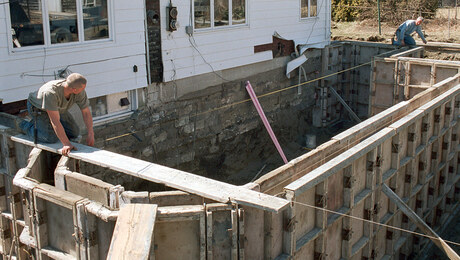so no one is jumping in to discuss venting valleys in an insulated roof.(insulated below deck with fiberglass)
I’m pretty curious about it. along the same line, I never see a ridge vent on a gabled dormer, no matter how big the dormer. I know a lot of them have flat insulated ceilings and a gable vent in the dead space below the roof – however i do see lots of dormers with insulation right below the roof deck, no vents.
in my case, i’ll end up with about 60% of my roof deck vented. not so great.
Discussion Forum
Discussion Forum
Up Next
Video Shorts
Featured Story

There are a number of ways to achieve a level foundation and mudsill.
Featured Video
How to Install Cable Rail Around Wood-Post CornersHighlights
"I have learned so much thanks to the searchable articles on the FHB website. I can confidently say that I expect to be a life-long subscriber." - M.K.

















Replies
My house is free framed out of 2"x12"s. Where things got tricky, that is to say around valleys and the hipped portions,I cut 6" notches 1 1/2"deep at the top of the joists to allow air movement.
In retrospect, I wish I had strapped the whole thing with 2"x4"s. You are either venting or you're not. Bad or intermittent venting is a problem waiting to happen.
venting a dormer is a matter of how its built. If its a closed air space and/ or it is the same height as the main ridge then it should get a ridge vent. if it is an open space and is lower than the main ridge then it shouldnt be vented unless its longer than 10 feet or so.
You mean at the ridge. They all need soffit vents.
yup, or even a low profile off ridge vent if preferred. GAF has a scale based on sqft under air. 50% in intake ie soffit and 50% through exhaust. If switching from gable vent to ridge then the gable vent becomes an intake and must be closed off. Most homes have way more soffit than needed because its easier to install all vented panels. I dont install vented soffits on inclines cause I believe it defeats the "intake from the lowest point" principle that allows intake air to travel the longest distance under the roof.